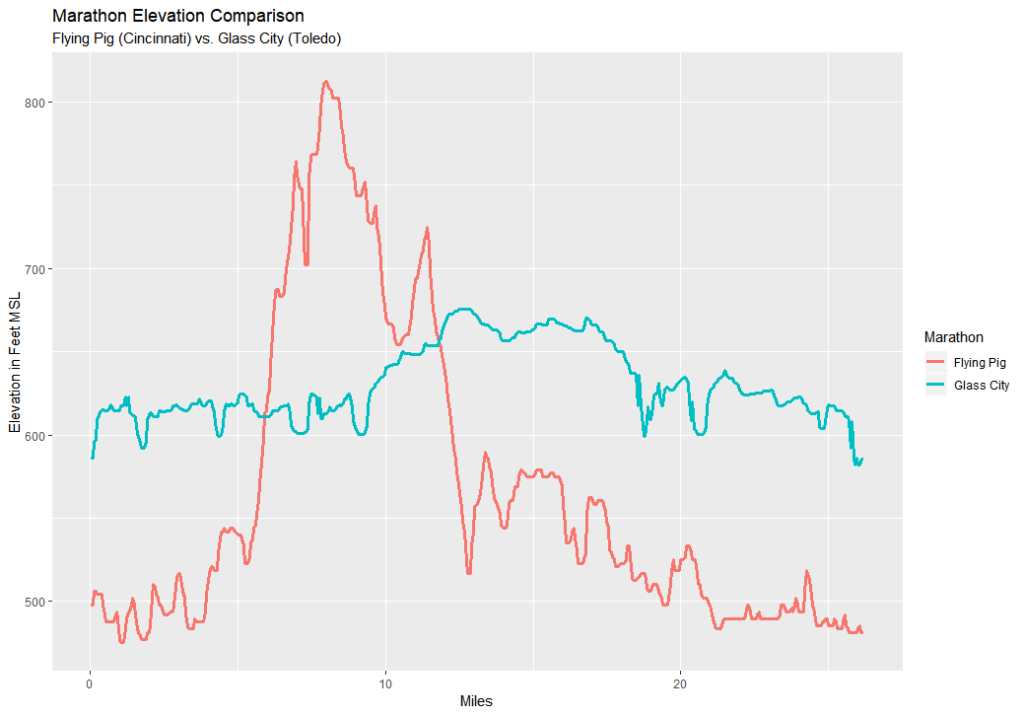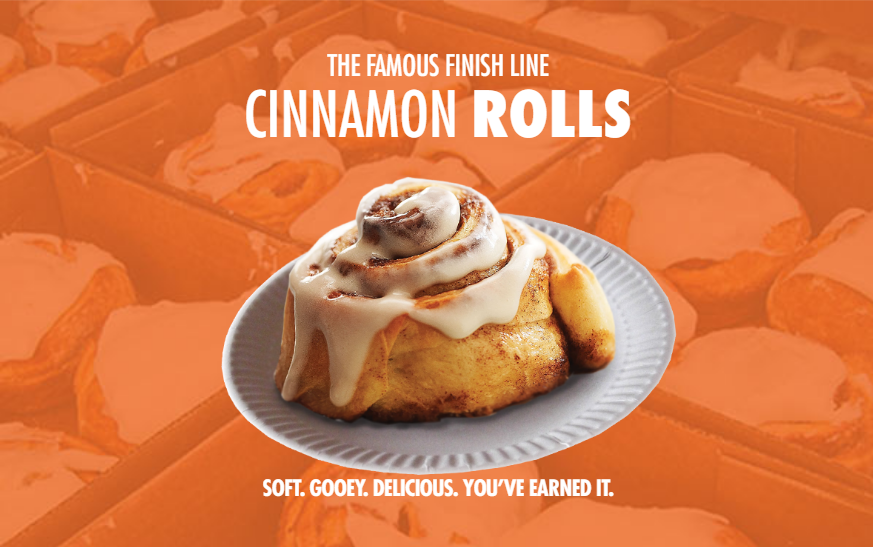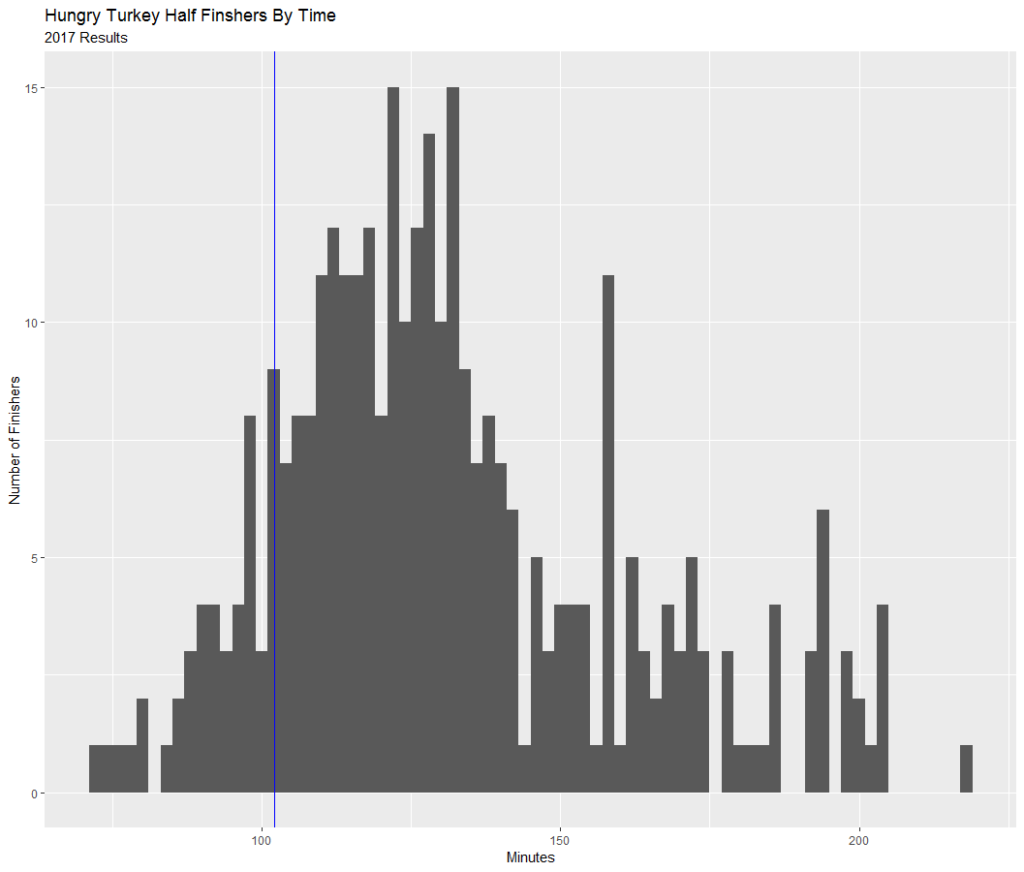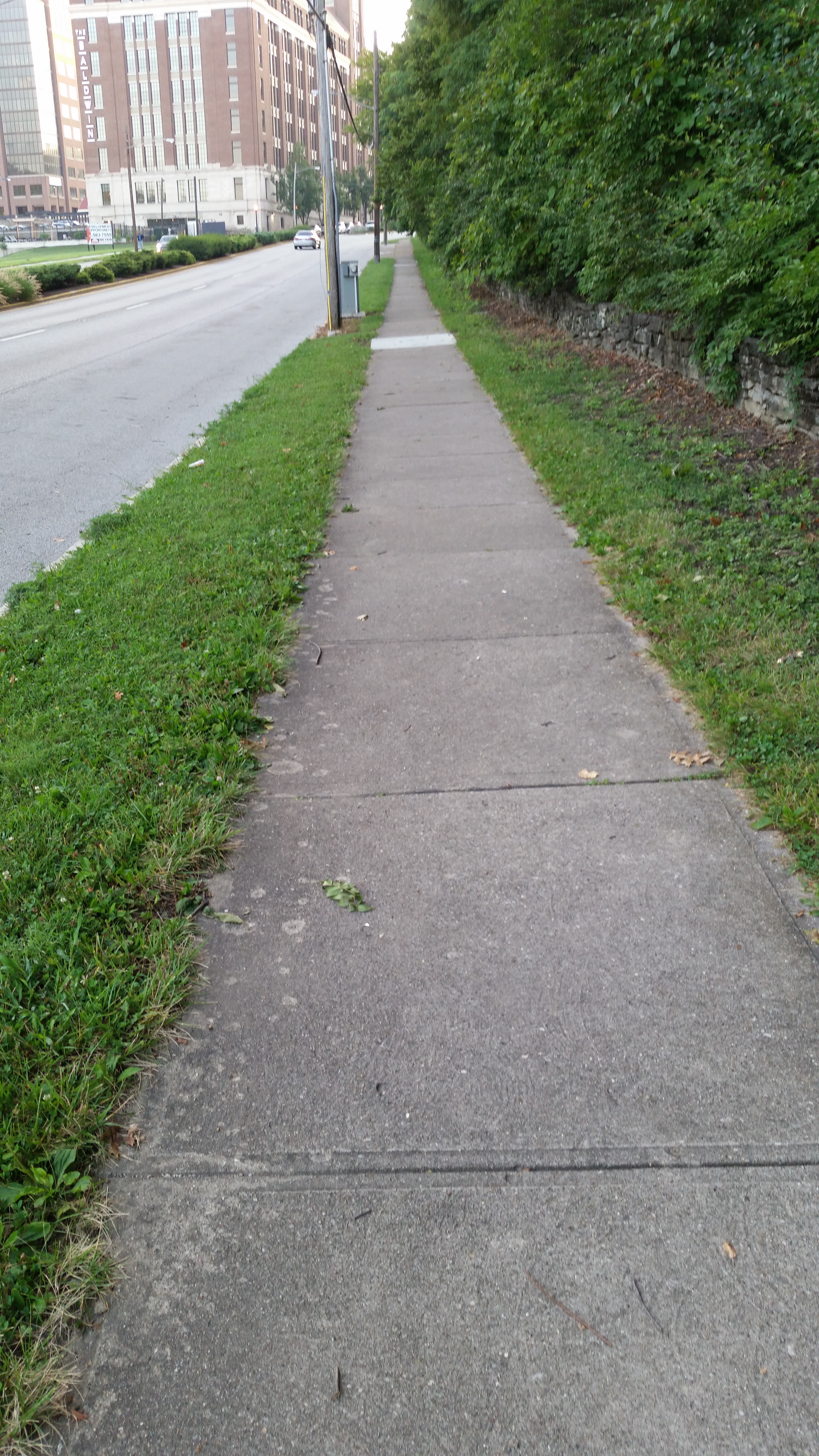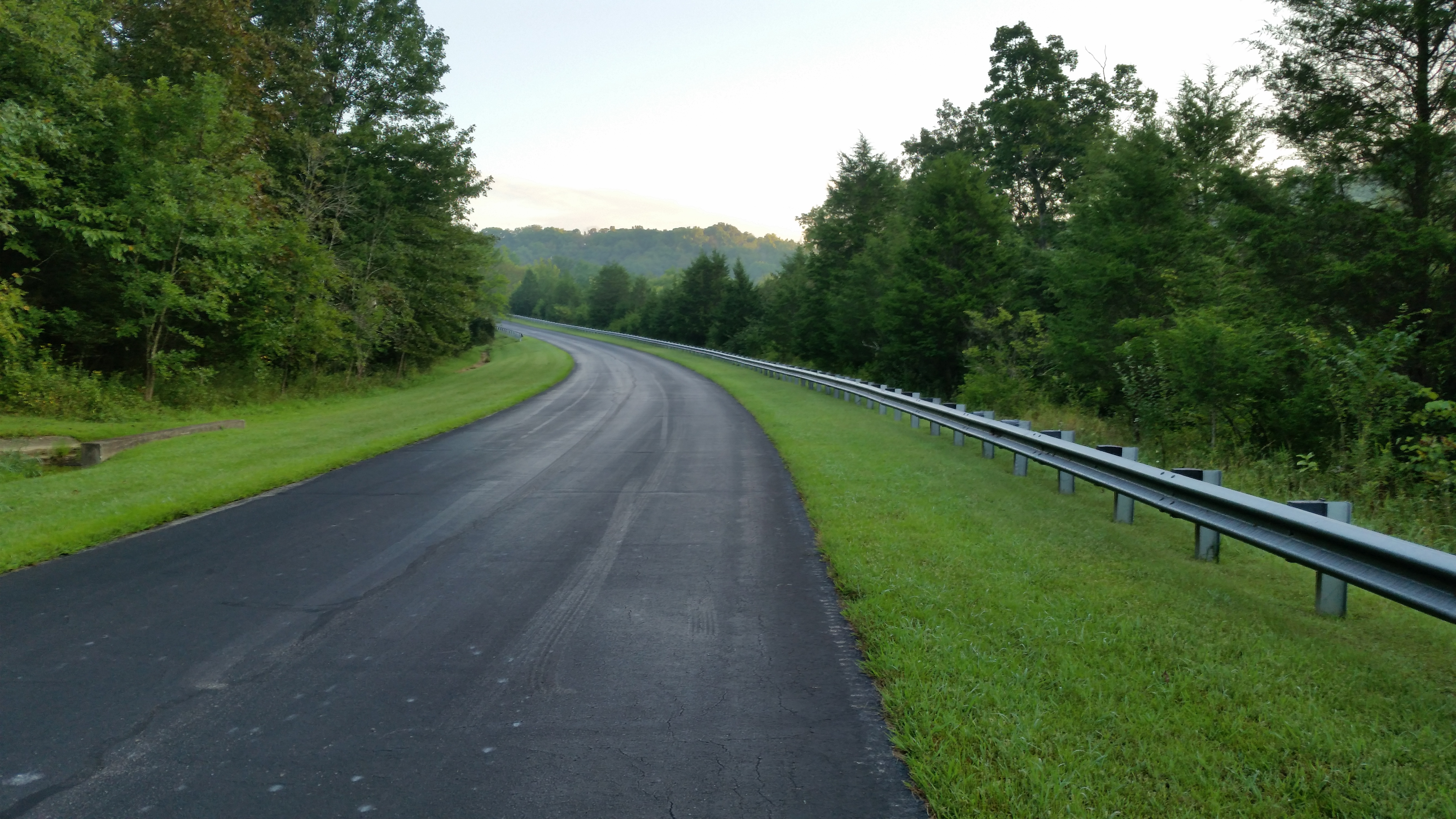This has been a different training cycle than what I’m used to, thanks in part to actually doing what the books I read tell me to do. I feel like I’ve done more treadmill miles and fewer afternoon miles. I definitely had fewer snowy miles, although I’ve slipped and fallen on ice more this season than in my prior eleven years of running. Interestingly, my watch decided that I’m improving, and the sudden skyrocket is on my last 20 mile run. There was nothing really spectacular about that run, it was an “easy” 20 mile run where my heart rate stayed in the “Aerobic Endurance” zone for 81% and the remaining 19% was in “Aerobic Power”. My cadence didn’t really change over the run (good!), and the training effect was “4.9 – Optimized”. Interestingly, on March 11 (20 miler #2), I was 61%/38% (Endurance/Power) and “5.0 – Overreaching”, and on Feb 18 (20 miler #1), I was 82%/16% and “5.0 – Overreaching”. 🤷♂️

My fueling and hydration strategy is pretty simple – Gatorade at even miles. At odd miles, I’ll probably take a cup of water and either sip it, drink it, or a little bit of both considering the weather is forecast to be a bit warm. Fueling is actually simple too – a gel at the beginning, and at 5, 10, 15, and 20. This is consistent with how I’ve handled my long runs. All of this was based on a Reddit post and simple straight-line interpolation.
That’s the plan. The expected punch in the face is the weather, which is currently forecast to be 53F and scattered thunderstorms at 7 AM and 62F and scattered thunderstorms at 11AM (start time is 6:30, and if I can make it in 3.5 hours – and that’s a big if – I should be finishing at 10:00 AM).

Start and Bridges: 0 – 5.5
This is, like in many marathons, the place where it cannot be won but can be lost… which in my case, it’s where I can screw over the later part by going too fast. One of the issues with this area specific to me is that a lot of my “formative” running was across the bridges – specifically the Purple People Bridge (next upstream from the Taylor Southgate Bridge used by the marathon and half marathon) and the Clay Wade Bailey Bridge (used by the marathon and half marathon). Keeping my pace in check during this part will be critical. That’s a little bit easier through Queensgate (the area between the north end of the Clay Wade Bailey Bridge and downtown) and then a little more difficult through downtown where there are a bunch of people cheering and probably another newscaster at the end before the road drops down to the bottom of Gilbert Street Hill, also known as The Hill from Hell.
The key to this portion is to not go out too fast. There’s plenty of space here to fuck over a race, but there’s far more race left.
The Hill From Hell: 5.5 – 8.5
The part of the ‘Pig that makes you question your decision-making is the three-mile-long series of hills. This is an elevation increase of about 300 feet in three miles, which sounds a lot easier than what it actually is. There usually is a good crowd through most of this stretch too, so it’s somewhat demoralizing to go so slow up a hill. I’m fairly certain I’ve seen news anchorpeople in front of the Channel 9 Studio here, and that’s among the few times I’ve actually looked. Elvis stands along another part of this hill also, in front of the Conservatory. This segment ends with the split where half marathon runners turn left, make another left, and go back down this hill. Marathon runners turn right and go down into O’Bryonville and then into Hyde Park.
The key here is to sustain. Keep going up the hill but like the last segment, it’s pretty easy to ruin the race.
Clean Air and Hyde Park: 8.5 – 13.1
This stretch is somewhat easy, partly from feeling good for being past the hill, and partly because it’s more down than up. The crowds – both on the course and on the side – thin out through here, which is a shame because this is where I actually paid attention to what was going on around me. There’s some cool looking buildings (like The Mushroom House) and Hyde Park has a lot of larger older homes, many of which are a lot nicer than the copy-paste homes builders throw up now.
The key here is the same as the last segment – sustain. Enjoy the views.
Mariemont and Fairfax: 13.1 – 17.5
This is one of the more enjoyable areas to me. Part of the reason is that I have family in the area that can walk to the course so I keep an eye out for them, and part of the reason is because some people get into it – there is a Mariemont scream tunnel, which is probably a much smaller scale than Wellesley. After a loop in Mariemont Square, the course heads back west via Murray Avenue and the Murray Path before making it’s way out onto Wooster Pike and Columbia Parkway.
The key here is the same as the last segment – sustain. Enjoy the shade, the views, and the crowd.
Run in the Sun: 17.5 – 24
This is one of the more difficult parts of the course because by this time you’re out in the sun and it starts on Columbia Parkway – no trees, no shade, good luck. The Marathon does a few things to try to help – there are inspirational signs along the parkway (unfortunately outside of the lone aid station on the parkway, there are no spectators since it’s a freeway), and there are some special stations past the freeway, including a Lay Up for Lauren station – named for Lauren Hill, and I remember attempting to throw a football in a spiral at something and failing miserably… and normally I’m pretty good at throwing a football. I also keep an eye out for friends through here, since this part of the race goes past Streetside Brewery and sometimes I know ham radio operators along the course.
The key here is to stay in the shade as much as possible. The Parkway is in full sun, but once you take the exit you can run a little longer in some places to stay in the shade, and that’s probably a better strategy for us non-elite runners.
Hill from Hell Reprise: 24-24.5
I used to work along the course, and would occasionally run through Friendship Park and out along Riverside Drive and it didn’t matter what I was doing – easy, hard, short, long, whatever, this hill was Hell. Always. At this point in the marathon, I need to make it my bitch.
Fight for the Finish: 24.5 – 26.2
This stretch is not difficult for a normal run, but for the last 1.5 miles of a marathon, it’s certainly no picnic. It’s flat-ish according to the elevation charts, but the reality is that there’s a hill just past Montgomery Inn Boathouse and it’s uphill for the last half mile. There’s usually a large crowd through here, since it’s along Friendship, Sawyer Point, and Smale parks and the last 0.2 you get a boost from the part of the crowd that finished before you (either in the marathon or half marathon that hung around to cheer) as well as people that came down to support runners.
The key to this part is to recover quickly from the last segment and push to the finish. It will be deceptively long, though, so keep that in mind.
The Beer!
…I’m just going to hope that the Michelob Ultra is fresh, the can I got after the half marathon last fall tasted off. There is a great afterparty with a band, plenty of booths (some of which will be giving out food), and there’s a good bit of food available in the finisher’s area, including pizza.
There’s also this beer that will be consumed in the evening with some steak or something like that. 😋😋😋




